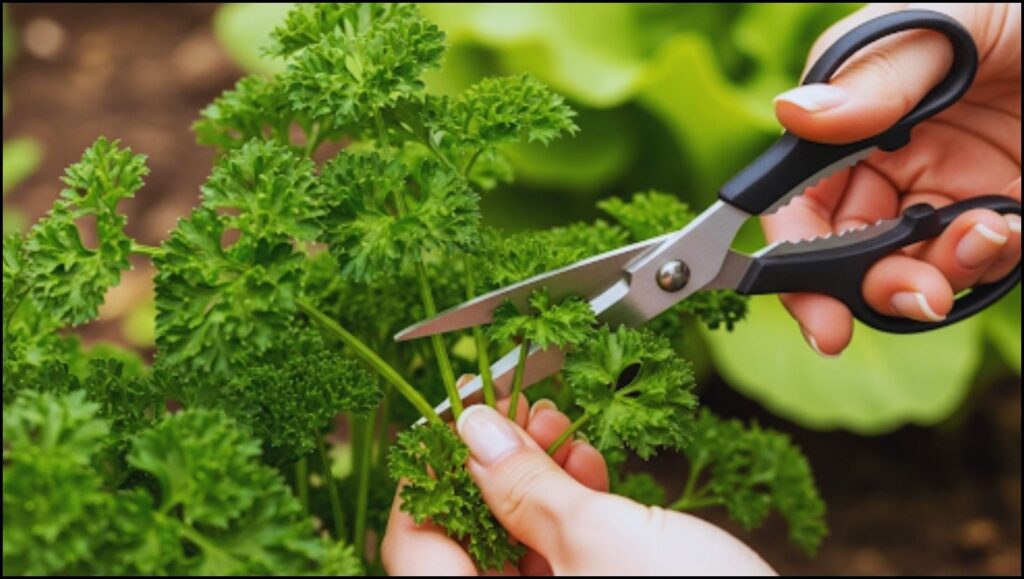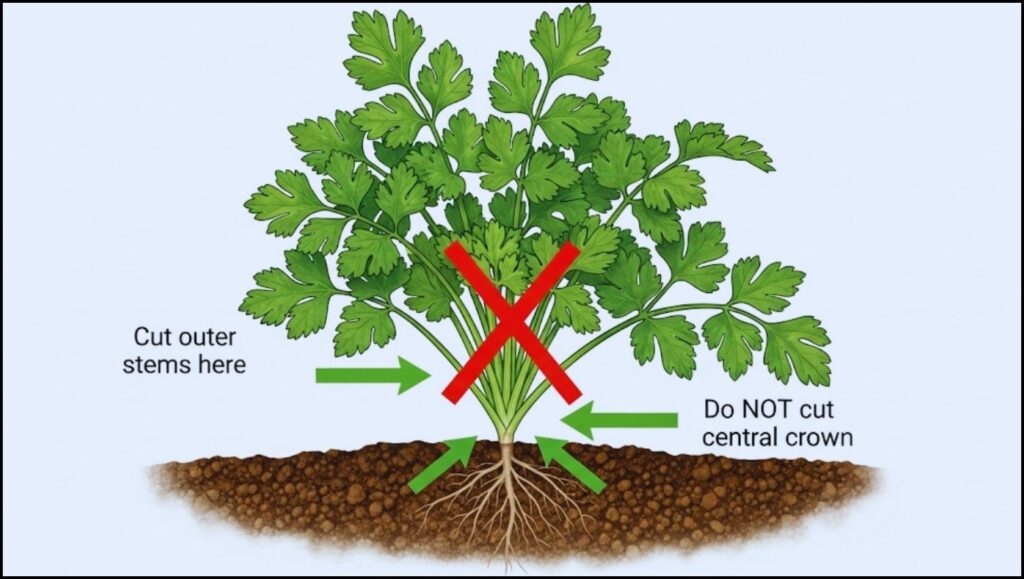
For gardeners and chefs alike, cultivating parsley is only half the journey. The key to unlocking its vibrant, full flavor lies in the specific timing and technique of its harvest. Experts advise that learning how to harvest parsley correctly not only ensures the best taste for culinary use but also promotes a healthier, more productive plant that can provide a continuous supply throughout the growing season.
How to Harvest Parsley
| Key Step | Detail |
| When to Start | Begin harvesting when the plant is well-established, typically 70-90 days after sowing seeds, with multiple stalks bearing three-segment leaves. |
| Harvesting Method | Always cut the outer stems first, snipping them at the base near the soil level. Avoid cutting from the plant’s center crown. |
| Harvesting Frequency | Harvest lightly but regularly. Never remove more than one-third of the plant’s foliage at one time. |
| Best Time of Day | Harvest in the morning after the dew has dried. |
How to Harvest Parsley for Continuous Growth
The most effective method for harvesting parsley is the “cut-and-come-again” technique, a process endorsed by horticultural experts for maximizing the plant’s lifespan and yield. This involves selectively cutting the oldest, outermost stems and leaves.
“Harvesting from the outside of the plant is critical,” said Dr. Lee Reich, a horticultural consultant and author. “It allows the young, central stalks to mature, ensuring the plant remains vigorous and continues to produce new foliage. If you cut from the center, you can stunt or even kill the plant.”
To do this correctly, identify the stalks on the outer perimeter of the plant. Using a pair of clean, sharp scissors or gardening shears, snip these stems close to the soil level. This method not only provides you with the most mature, flavorful leaves but also signals the plant to direct its energy toward the crown, stimulating fresh growth. Regular harvesting also helps prevent the plant from bolting—sending up a flower stalk—which can cause the leaves to turn bitter, according to a guide from the University of Illinois Extension.
Timing and Tools for an Optimal Harvest
The timing of the harvest is as important as the technique. While parsley can be snipped as needed, the ideal time of day is in the morning.
“Morning harvests are superior because the plant’s essential oils are at their peak concentration before the afternoon sun can begin to dissipate them,” explains a publication from the Cornell Cooperative Extension. This ensures that the fresh parsley you bring into the kitchen is as aromatic and flavorful as possible.
Essential Tools and Preparation
A precise cut minimizes damage to the plant, reducing the risk of disease.
- Use Sharp Scissors or Shears: A clean cut helps the plant heal quickly. Dull tools can crush the stems, creating entry points for pests and pathogens.
- Clean Your Tools: Before harvesting, wipe the blades of your scissors with rubbing alcohol to prevent the spread of any plant diseases.

Harvesting Different Parsley Varieties
While the general harvesting principle is the same for all types of parsley, home gardeners will most often encounter two main varieties: flat-leaf and curly leaf.
- Flat-Leaf Parsley (Petroselinum crispum var. neapolitanum): Often called Italian parsley, this variety is prized by chefs for its robust, bright flavor. Its flat leaves are easier to chop and incorporate into dishes. Its growth habit is typically more open and sprawling, making the outer stems easy to identify and access.
- Curly Leaf Parsley (Petroselinum crispum var. crispum): This variety has tightly ruffled, decorative leaves and a milder flavor. While commonly used as a garnish, its curly leaf parsley texture can add dimension to salads. Due to its dense, bunched growth, you may need to gently separate the foliage to locate the base of the outer stems.
“While both are harvested the same way, flat-leaf parsley is generally considered superior for cooking due to its more complex flavor profile,” notes the Missouri Botanical Garden in its plant profile.
Storing Fresh Parsley to Preserve Flavor
Once harvested, proper storage is essential to maintain the parsley’s quality. The goal is to keep it hydrated and cool. One of the most effective methods is to treat it like a bouquet of fresh flowers. Trim the very bottom of the stems, place the bunch in a jar or glass with about an inch of water, and cover it loosely with a plastic bag. Stored this way in the refrigerator, fresh parsley can last for up to two weeks.
For longer-term storage, parsley can be frozen or dried. To freeze, chop the leaves, place them in an ice cube tray, cover with a small amount of water or olive oil, and freeze. Dried parsley loses much of its vibrant flavor but can be stored in an airtight container in a cool, dark place. Regularly applying these harvesting and storage techniques will ensure a steady and flavorful supply of one of the world’s most popular herbs, transforming it from a simple garden plant into a culinary staple.
9 Creative Island Flower Beds to Enhance Your Landscape Style
